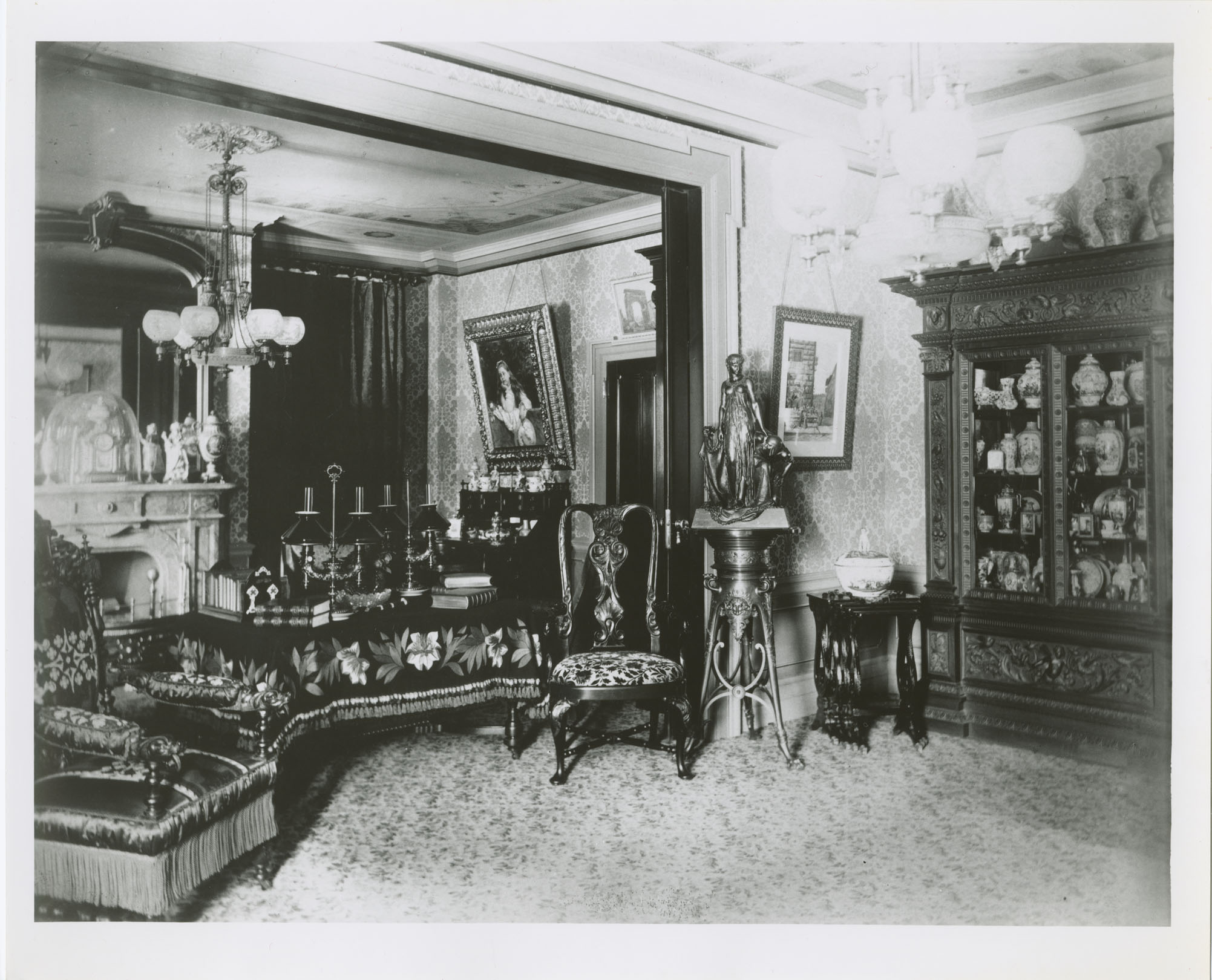Photograph of Original Music Room (Early 20th Century)
Title
Photograph of Original Music Room (Early 20th Century)
Description
The music room was not part of the original house construction, and was divided into two rooms by presumably, John Carter Brown who removed a portion of the wall with a framed archway, separating the space into two rooms. In the 1920s, John Nicholas Brown II removed the archway and added a mantle. His changes to the music room transformed the room into a more open space. In the 19th century, the room was used as a drawing room. Unlike the parlor, which was more formal in nature, this was a room where the host could bring guests, either before or after dinner, to entertain and converse casually. When John and his new wife Anne took up residence in 1930, the drawing room became a music room, reflecting the couple’s mutual interest.
Although they had very different personalities, John and Anne appreciated each other’s artistic passions, and invited famous musicians to play at their home or performed as a family quintet for guests. John played the cello, Anne played the violin, and their children played the violin and piano. John and Anne were also active in musical philanthropy. John Nicholas Brown II founded the St. Dunstan’s College of Sacred Music in 1929, and Anne started the the Newport Music Festival in 1969.
Although they had very different personalities, John and Anne appreciated each other’s artistic passions, and invited famous musicians to play at their home or performed as a family quintet for guests. John played the cello, Anne played the violin, and their children played the violin and piano. John and Anne were also active in musical philanthropy. John Nicholas Brown II founded the St. Dunstan’s College of Sacred Music in 1929, and Anne started the the Newport Music Festival in 1969.
Creator
Brown II, John Nicholas
Source
Digital copy created by the John Nicholas Brown Center for Public Humanities and Cultural Heritage
Date
Early 20th Century
Contributor
Minah Seo
Rights
Rights Status Not Evaluated
Original Format
Photograph
Citation
Brown II, John Nicholas, “Photograph of Original Music Room (Early 20th Century),” Digital Tours of The Nightingale-Brown House , accessed November 3, 2025, https://cds.library.brown.edu/NBHouse/items/show/31.
